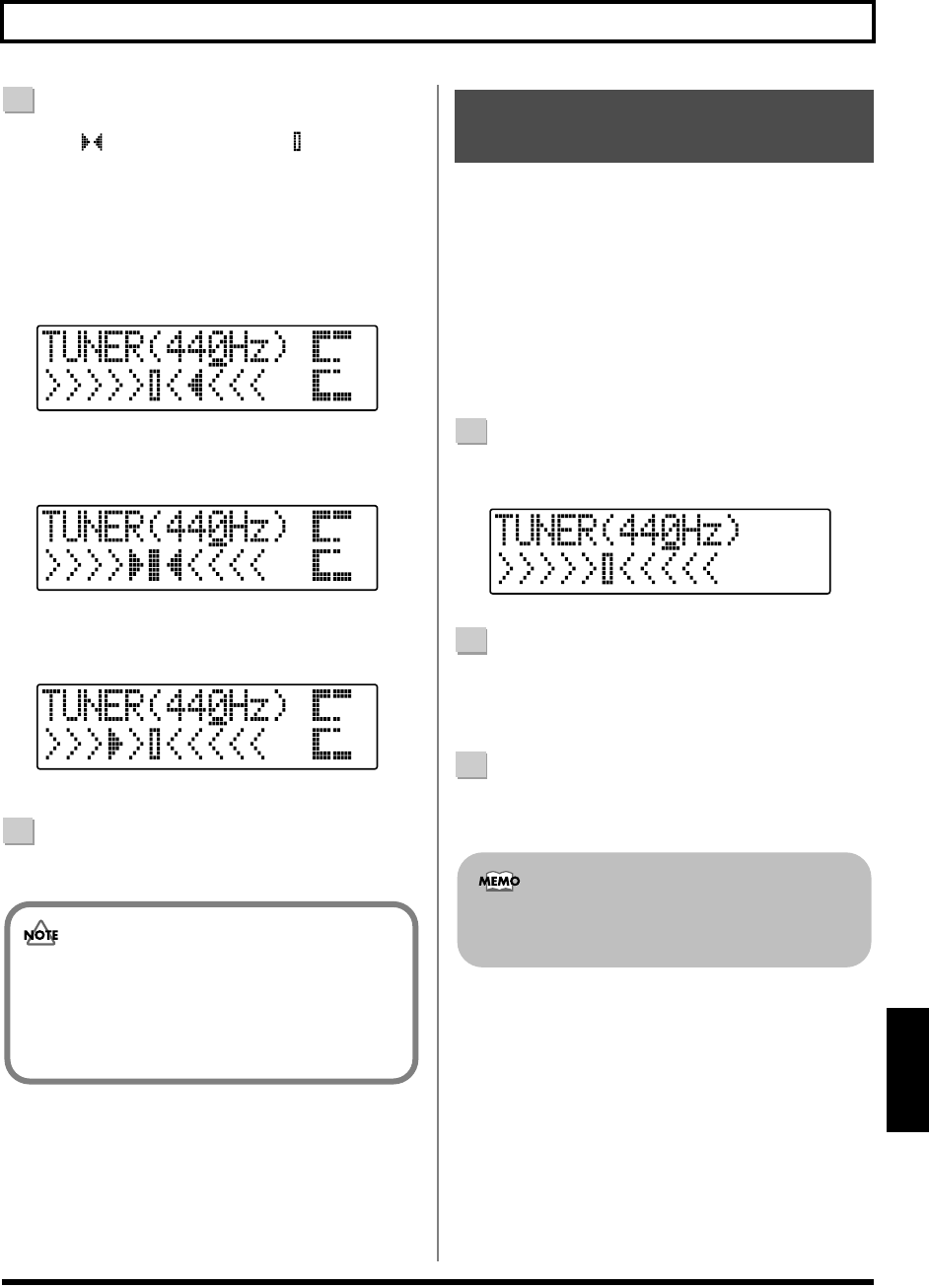
193
Tuning an Instrument (Tuner)
Section 6
3
While viewing the tuning guide, adjust the tuning so
that “ ” is positioned midway “ ” between the
two sides.
If the pitch of the string is within +/-50 cents of the
correct pitch, the tuning guide will indicate the
discrepancy between the actual and the correct pitches.
Your instrument is tuned above the displayed note
fig.06-090
Your instrument is tuned the displayed note
fig.06-100
Your instrument is tuned below the displayed note
fig.06-110
4
Repeat steps 1–3 to tune each of the strings.
The reference pitch refers to the frequency of the A4 key
(i.e., the “A” key at the center of a piano keyboard) from the
instrument that serves as the reference pitch during
performances (e.g., piano).
On the BR-600, you can set the reference pitch of the tuner
to any value between 435 and 445 Hz.
* This was set to 440 Hz when the unit was shipped from the
factory.
1
Confirm that [PAD] is not lit, then press [TUNER] to
display the Tuner screen.
fig.06-070
2
Turn the TIME/VALUE dial to change the reference
pitch.
Reference pitch:
435–445 Hz
3
To exit the tuner, press [TUNER] once again (or press
[EXIT]) to return to the Play screen.
If you are tuning a guitar that has a vibrato arm, tuning
one string may cause other strings to drift. In this case,
you should first tune the strings approximately so that
the correct note name is displayed, and then re-tune
each string.
Setting the Reference Pitch
of the Tuner
The reference pitch set here is used as the reference
pitch for Pitch Correction (p. 123).
BR600_e2 193ページ 2006年4月17日 月曜日 午前9時3分
